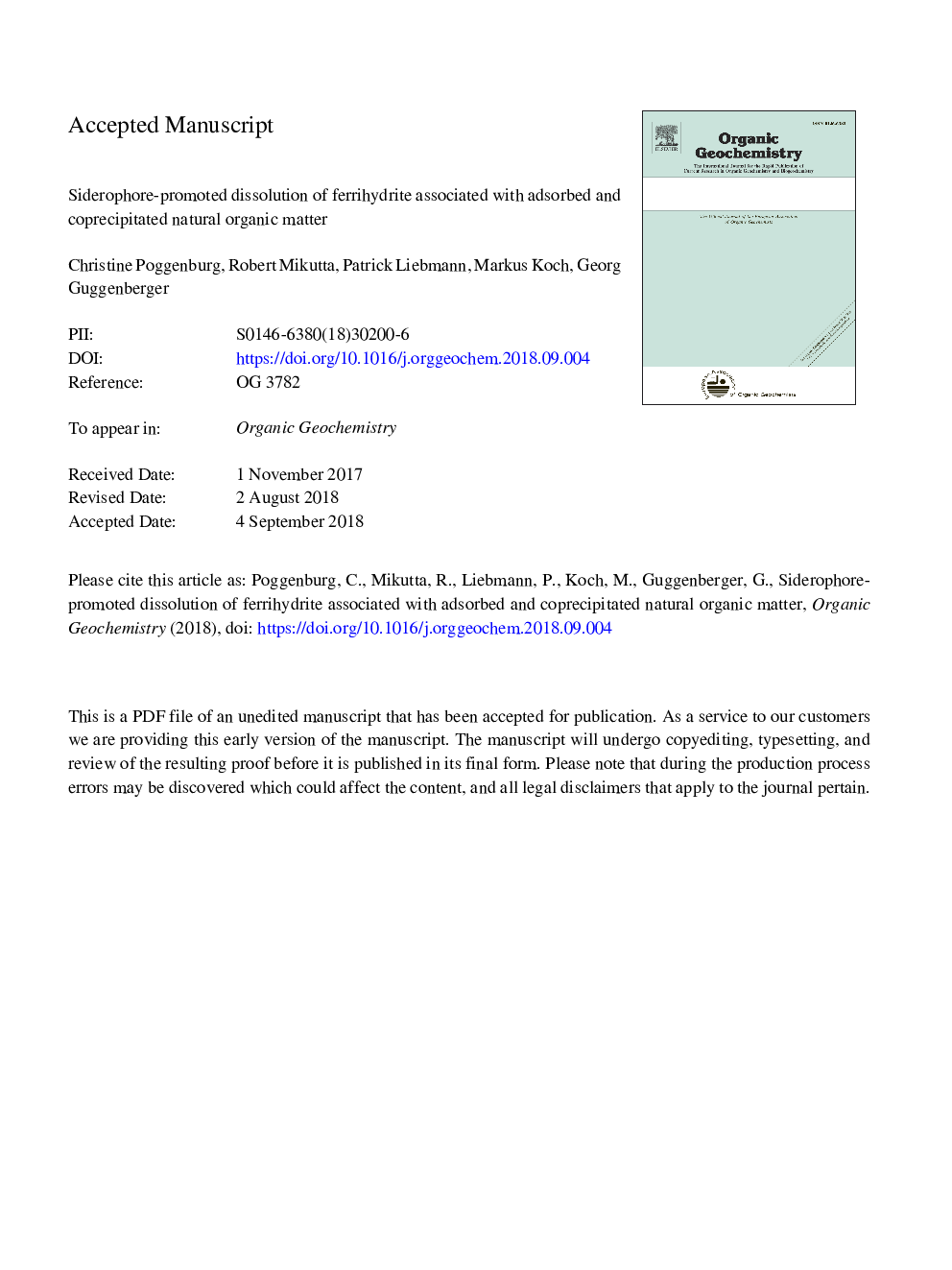| Article ID | Journal | Published Year | Pages | File Type |
|---|---|---|---|---|
| 11031175 | Organic Geochemistry | 2018 | 34 Pages |
Abstract
Acquisition of Fe(III) from hardly soluble Fe oxyhydroxides by bacteria, fungi and plants in soil is often facilitated by Fe(III)-chelating siderophores. While the siderophore-promoted dissolution of pure Fe oxyhydroxides and the influence of defined low molecular weight organic acids has been investigated meticulously, studies examining Fe oxyhydroxides coated with more complex adsorbed organic matter (OM) or Fe-OM coprecipitates have been sparse. This study therefore explored the impact of the composition of both adsorbed and coprecipitated OM on the siderophore-promoted dissolution of ferrihydrite (Fh) in relation to (i) surface site coverage and pore blockage, (ii)Â aggregation state, (iii) charge characteristics and (iv) crystallinity. In addition to pure Fh, Fh-OM adsorption complexes and Fe-OM coprecipitates were synthesized using OM of different origins (extracellular polymeric substances of Bacillus subtilis, natural OM (NOM) extracted from soil Oi and Oa horizons). The Fe-organic associations were characterized by N2 gas adsorption, X-ray photoelectron spectroscopy (XPS), electrophoretic mobility, particle size measurements and desorption experiments. Siderophore-mediated dissolution experiments with desferrioxamine-B (DFOB) were conducted at pH 4 and 7. At pH 4, adsorbed OM provided a more effective protection against DFOB due to its larger sorption affinity. At pH 7, the surface site blockage by adsorbed OM at comparable C loadings was less effective, while less aggregated particles were more prone to dissolution. For OM coprecipitated with Fe, there was no distinct accelerating or inhibiting effect on DFOB-promoted dissolution to be found. Initial Fe dissolution rates at given soil conditions were thus affected by both the type of OM and the sorption procedure. Our results therefore corroborate the importance of considering the heterogeneous composition of soil OM when investigating the mobilization of Fe-organic associations.
Keywords
Related Topics
Physical Sciences and Engineering
Chemistry
Organic Chemistry
Authors
Christine Poggenburg, Robert Mikutta, Patrick Liebmann, Markus Koch, Georg Guggenberger,
